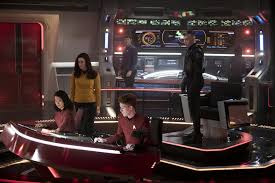Exploring the Concept of Strange New Worlds

Introduction
The exploration of strange new worlds has captivated humanity for centuries, both in the realm of science and fiction. From distant planets explored by astronomers to imaginative realms crafted by authors, the concept of strange new worlds stands at the intersection of curiosity and creativity. Understanding these worlds not only satisfies our thirst for knowledge but also inspires advancements in technology and science.
Strange New Worlds in Astronomy
In recent years, astronomers have made significant discoveries of exoplanets that exhibit bizarre characteristics. The Kepler Space Telescope, which operated between 2009 and 2018, identified thousands of potential new worlds, many of which challenge our understanding of planetary formation and habitability. For instance, the discovery of ‘hot Jupiters,’ gas giants that orbit extremely close to their stars, forces scientists to rethink the dynamics of planetary systems.
Moreover, the James Webb Space Telescope, launched in late 2021, is expected to provide unprecedented insights into the atmospheres of these distant planets. Initial observations suggest the presence of water vapour, which could hint at the possibility of life elsewhere in the universe. This exploration not only broadens our scientific horizons but also fuels discussions about the potential for human colonisation of another planet.
Strange New Worlds in Literature and Media
Literature and popular media have also played a crucial role in shaping our perception of strange new worlds. The genre of science fiction, in particular, has introduced numerous imaginative landscapes, from Arthur C. Clarke’s ‘Rendezvous with Rama’ to Philip K. Dick’s dystopian futures. These narratives allow readers to explore the implications of advanced technology, alien life, and the impacts of otherworldly discoveries on society.
Television series such as ‘Star Trek: Strange New Worlds’ further exemplify humanity’s fascination with the unknown. This series not only entertains but also invites viewers to think about ethical dilemmas, cultural interactions, and the future of exploration. Through thoughtful storytelling, these media provoke a dialogue about our aspirations and responsibilities as we look to the stars.
Conclusion
The quest for discovering strange new worlds is about more than just scientific endeavour; it encompasses our deepest desires to understand the universe and ourselves. As technology advances, the line between fiction and reality continues to blur, prompting us to consider what lies beyond our own planet. With ongoing missions and extensive research, we may soon be on the brink of unprecedented discoveries. For readers, the relevance of strange new worlds is a reminder of the vast potential of exploration and the creativity that drives human innovation.









